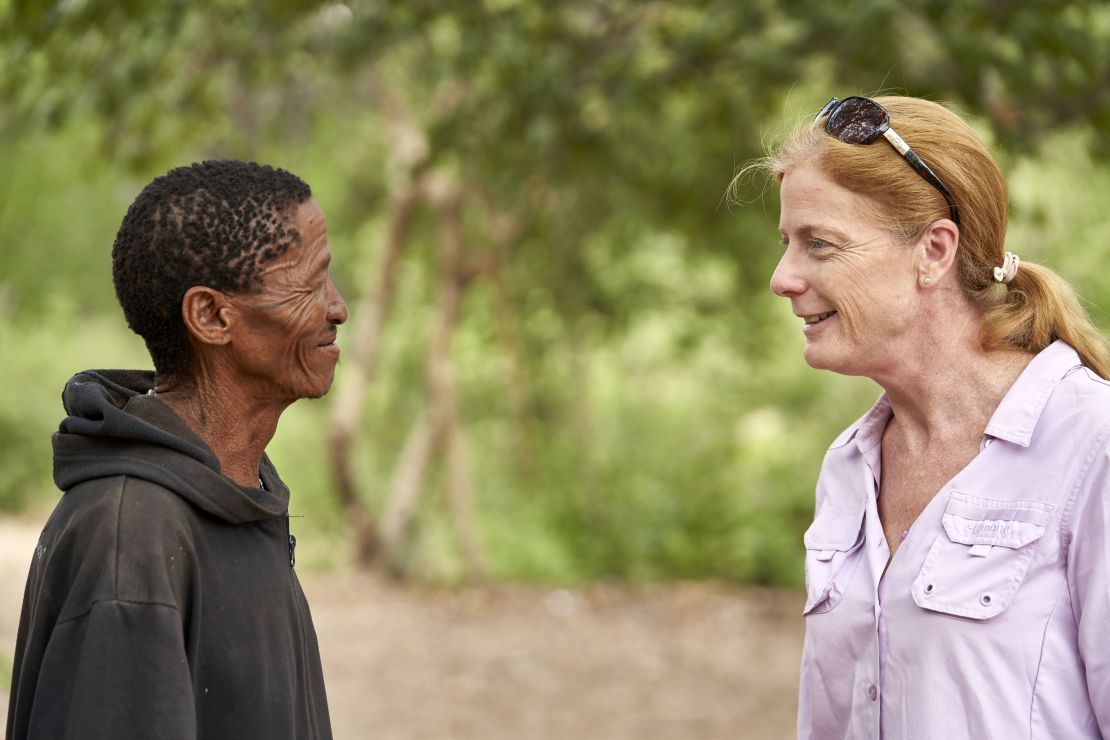Africa has long been regarded as the cradle of humankind, but scientists seeking a more specific location have narrowed in on northern Botswana as the “homeland” for all modern humans, according to a new study.
There, south of the Greater Zambezi River Basin, which includes northern Botswana and parts of Namibia and Zimbabwe, the ancestors of Homo sapiens began 200,000 years ago, the researchers said.
Their new study, published Monday in the journal Nature, suggests that the ancestors of modern humans thrived for 70,000 years in this region before climate change led them to migrate out of Africa and eventually span the globe.
Previously, some fossil evidence has suggested that modern humans originated in eastern Africa. DNA evidence has pointed to southern Africa, where Botswana is located.
“It has been clear for some time that anatomically modern humans appeared in Africa roughly 200,000 years ago. What has been long debated is the exact location of this emergence and subsequent dispersal of our earliest ancestors,” said Vanessa Hayes, lead study author at the Garvan Institute of Medical Research and the University of Sydney. “We’ve been able to pinpoint what we believe is our human homeland.”

To find their time capsule of the first 100,000 years of modern humans, the researchers used DNA to piece together the past.
They worked with local communities in Namibia and South Africa to collect blood samples.
“Mitochondrial DNA acts like a time capsule of our ancestral mothers, accumulating changes slowly over generations,” Hayes said. “Comparing the complete DNA code, or mitogenome, from different individuals provides information on how closely they are related.”
This provided a catalog of more than 1,000 mitogenomes including the L0 lineage, the earliest known modern human populations. The samples also helped the researchers to find rare and new sub-branches of this lineage.
“We merged 198 new, rare mitogenomes to the current database of modern human’s earliest known population, the L0 lineage. This allowed us to refine the evolutionary tree of our earliest ancestral branches better than ever before,” said Eva Chan, study author and phylogenetic analysis lead from the Garvan Institute of Medical Research.
Once they established the L0 timeline, they were able to align it with sub-lineages and subsequently, the culture, geography and language of those branches. This acted like a map, creating a single region as an origin point: the Makgadikgadi-Okavango palaeo-wetland in southern Africa.
The researchers then studied the region itself, analyzing the fossil and geologic record. They discovered that it once held the largest lake system in Africa, twice the area of Lake Victoria. About 200,000 years ago, that massive lake system began to break apart.
“Prior to modern human emergence, the lake had begun to drain due to shifts in underlying tectonic plates,” said Andy Moore, study co-author and geologist from Rhodes University. “This would have created a vast wetland, which is known to be one of the most productive ecosystems for sustaining life.”
The wetlands created a stable environment, providing everything ancient humans needed to survive. This environment was sustainable for 70,000 years before things began to change again, according to the study.

“We observed significant genetic divergence in the modern humans’ earliest maternal sub-lineages that indicates our ancestors migrated out of the homeland between 130,000 and 110,000 years ago,” Hayes said. “The first migrants ventured northeast, followed by a second wave of migrants who traveled southwest. A third population remained in the homeland until today. In contrast to the northeasterly migrants, the southwesterly explorers appear to flourish, experiencing steady population growth.”
To the southwest, our ancestors had to adapt to foraging and using resources found in a marine environment, and it appears they did so successfully, Hayes said. The researchers also found archaeological evidence originating in the southernmost point of Africa to support their findings.
The researchers also investigated the way the climate changed and what role it played in motivating early humans to migrate. They were able to simulate and model how Southern Africa’s climate changed over the past 250,000 years.
“Our simulations suggest that the slow wobble of Earth’s axis changes summer solar radiation in the Southern Hemisphere, leading to periodic shifts in rainfall across southern Africa,” said Axel Timmermann, study co-author and director of the IBS Center for Climate Physics at Pusan National University. “These shifts in climate would have opened green, vegetated corridors, first 130,000 years ago to the northeast, and then around 110,000 years ago to the southwest, allowing our earliest ancestors to migrate away from the homeland for the first time.”
Humidity levels increased, causing these green, lush pathways to lead away from where modern humans began. These early migrations would pave the way for modern humans to disperse from Africa and eventually settle around the world.
Now, the region once filled with wetlands is a desert. But the blood of the people who still live there tells an ancient story.
“These first migrants left behind a homeland population,” Hayes said. “Eventually adapting to the drying lands, maternal descendants of the homeland population can be found in the greater Kalahari region today.”
























